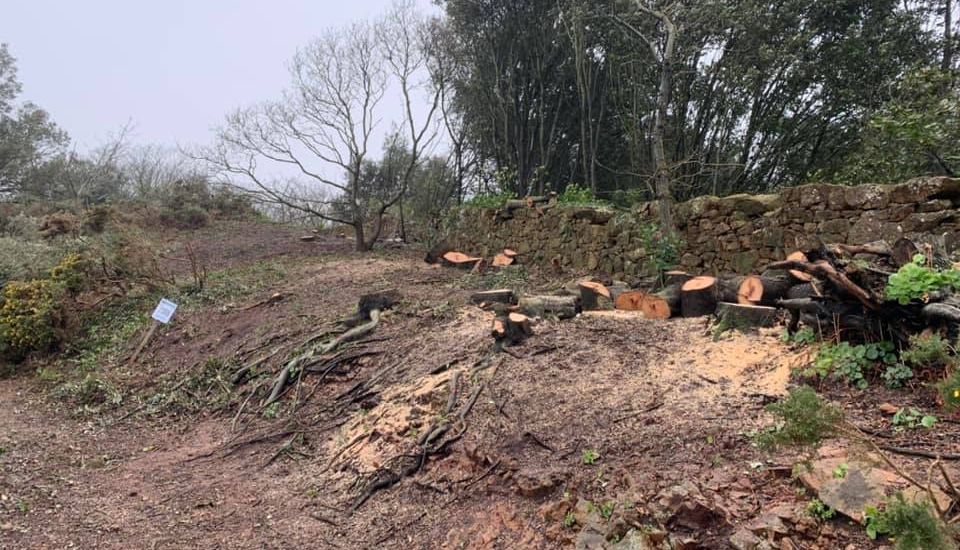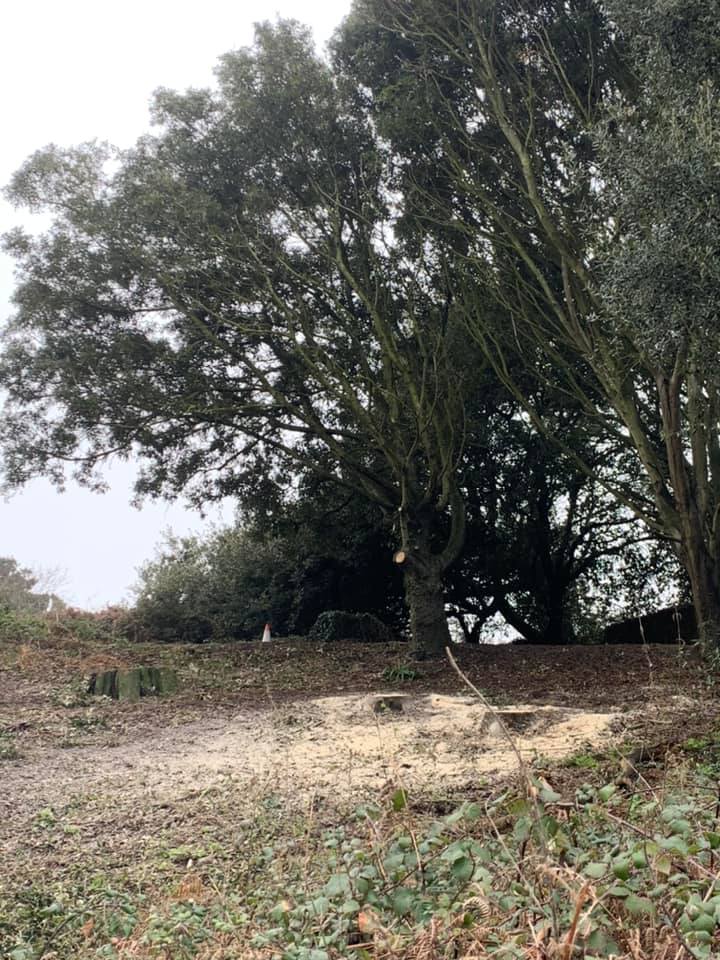


The Government has defended itself against claims of showing a “disregard for nature” after removing a significant number of trees around Beauport headland, saying they were invasive species at risk of becoming “too dominant”.
A “fuming” Mark Lemasurier took to social media to share his upset when he spotted what he described as the “destruction of a tree habitat” which he claimed was previously home to “hundreds of doves and pigeons and resting areas for the hawks and squirrels”.
Branding the Government as a "bad" business in a post on the 35,000-member-strong 'Good and Bad Jersey Businesses', he added: "It's TOO LATE now like everything else on this island to stop this absolute disregard for all that is jersey and what all of us love!
"PLEASE PLEASE PLEASE stop putting your own agendas first now and try to save this lovely island. Ps as a green policy cutting down trees is surely what you learn first NOT to do!"
When contacted by Express to explain why the trees had been removed, the Government responded: "The trees being removed were an invasive species to prevent them becoming too dominant."

Pictured: The Government said removing Holm Oak was "crucial for maintaining" the ecological importance of the area.
They did not reply to a question asking what trees, if any, would be replanted there.
The removal of the Holm Oak's was described as "crucial for maintaining both the ecological and landscape importance of the area".
Other species they said they had to actively "manage" in the area include sycamore and Turkey oak, among others.
Beauport is also "one of only a couple of south west coastal sites where Hottentot fig has been controlled to such an extent that it is not dominant over preferred native vegetation allowing it to extend down to the shoreline", they said.
"Another succulent invasive plant, has recently become established on the coastal slopes and is causing concern. Like Hottentot fig this South African plant has managed to escape the confines of gardens and needs constant control, often by rope access teams to safeguard our native coastal habitats."
They also said that, through a regime of managing, mowing and grazing, "the neutral grasslands on the main plateau of the site, once dominated by bracken and bramble are improving in condition".
"This has been seen to favour a varied range of flowers, butterflies and hoverflies. The areas which are still dominated by bracken have been identified as being grasslands or heather and gorse areas of the future," officials added.
Officials explained...
"This coastal site is rich in lichens with 79 species having been recorded between Beauport and La Moye, and harbours a couple of very rare species including Umbilicaria grisea, which doesn't benefit from having a common name. This is the only place in the whole of the British Isles where this species is found.
The locally uncommon Jersey Buttercup can be found on the crest of the coastal slopes where the Green Lizard can be seen basking in the sunshine.
The Zitting cisticola, a diminutive rare bird was nesting here over a couple of years but has not seen since. The males have a zigzagging flight display accompanied by regular "zitting" calls that have been likened to the repeated snips of scissors.
Other birds which can be seen here include the Common Whitethroat, Peregrine Falcon, Raven and the Chough which as another part of the Birds on the Edge Project is being reintroduced to the Island after a period of 100 years of absence.
A recent addition to the site following the provision of breeding ponds is the rare Agile Frog and the hope is that a population will become established here.
Fascinating insects found at Beauport include the Common Mourning Bee, a parasitic bee whose host bee is the Hairy-footed Flower Bee which nests on the bare cliffs at the top of the beach and the Running Crab Spider which, within the Channel Islands, is only found at Beauport.
Agricultural fields provide an opportunity to support the Birds on the Edge Project, a partnership between the Government of Jersey, Durrell and the National Trust for Jersey by planting crops such as spring barley which provide a source of food for birds during the 'hungry gap' months of January – March. The fields alongside the entrance are sown every two years, and in the intervening years there is usually an impressive show of Purple Viper's Bugloss, a casually recorded plant in Southern Britain but locally common in Jersey and on the continent. It was introduced to Australia and because of its invasive nature has become known as Paterson's Curse, named after a family who planted it in their garden in the 1880s.
There are also plans to sow seeds here to support the Pollinator Project, providing a range of nectar rich flowers for bees, hoverflies, butterflies and other pollinating insects."
Comments
Comments on this story express the views of the commentator only, not Bailiwick Publishing. We are unable to guarantee the accuracy of any of those comments.